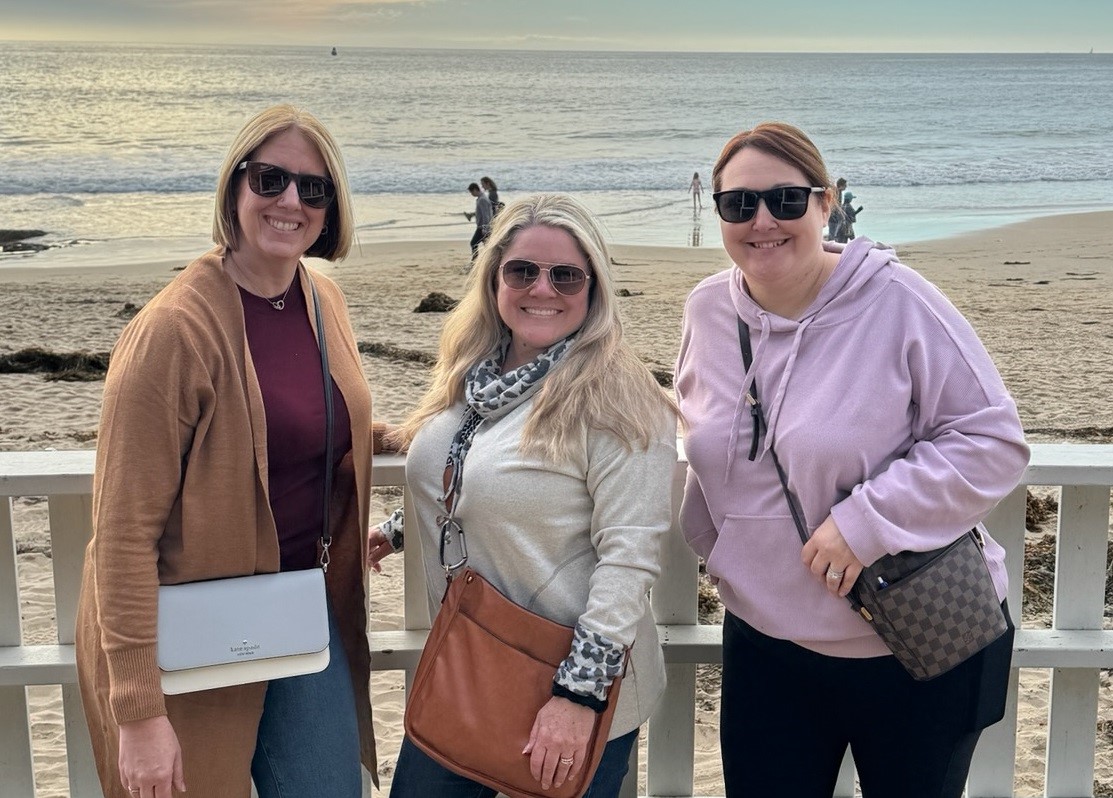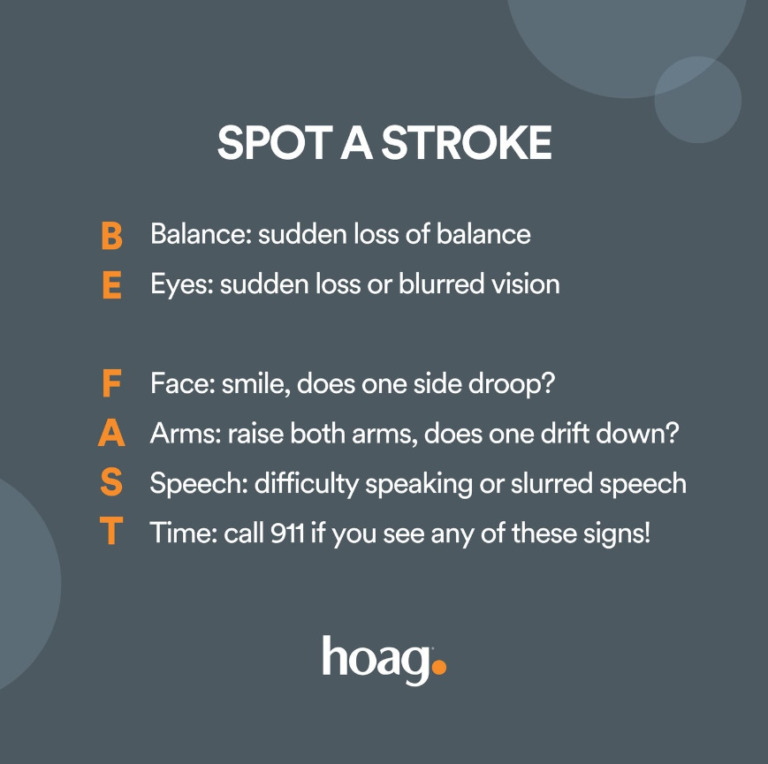Community support helped ensure that Hoag had expert clinicians and state-of-the-art technology when Lisa Peterson needed life-saving treatment after suffering a massive stroke at Crystal Cove State Beach.
It was July 10, 2023, and already blazing hot in Rancho Cucamonga when Lisa Peterson and her daughter, Haylee, left their home for Newport Beach to enjoy some respite in the waves with friends. They were running late and had to carry their stuff through the tunnel at Crystal Cove State Beach in the already warming air. Huffing and puffing, Lisa noticed that the sand had already grown pretty toasty.
She felt her heart flutter. No big deal, she thought. She figured she was probably overheated. Then she tried to open her beach chair, but her left hand just… didn’t work.
“I fell backward. My friend tried to give me water, but I coughed the water out,” Lisa said. “I said, ‘I’m sorry. I’m really out of shape.’ Then I heard talking, and one of them yelled, ‘Go get the lifeguard.’”
Lisa didn’t realize it, but the entire left side of her face and body had gone slack. Her quick-thinking friends immediately recognized this as a sign of stroke and got the lifeguard.

Pictured: Lisa (far right) with her two friends, Jaclyn and Julie, who helped save her life with their quick action.
Hoag’s nationally recognized Stroke Program, part of the Pickup Family Neurosciences Institute, is an Orange County Emergency Medical Services designated Stroke Neurology Receiving Center and works closely with lifeguards and EMTs in the area. The lifeguard called for an ambulance even before reaching Lisa’s side.
“He said, ‘Hi. I’m Niel. That was the last face I saw before I lost my vision,’” she said. Lisa remembers hearing the ambulance ride as she was being transported by Newport Beach Fire Department paramedics and being in the CT machine at Hoag. She also remembers hearing medical staff explain to her that she had two blood clots in the right side of her brain.
“They said, ‘We’re going to get them out,’” Lisa said. “I thought, ‘How in the world are you going to do that?’ Then I realized, ‘I’m going to have a brain procedure.’”
The time from Lisa’s collapse on the beach to the removal of the blood clots that had caused a massive stroke was 72 minutes. From the time she arrived at Hoag’s Emergency Department, it took only 42 minutes to remove the blood clots. The speed, skill and expertise that everyone from State Park Lifeguard Niel Smith to neurointerventional radiologist Avinash Mesipam, M.D., saved Lisa’s life – and her quality of life.
“I woke up in the ICU with everything back, my vision, my speech, my ability to walk,” she said.
Armed with the latest tools for rapid diagnosis and stroke rescue, Hoag provides suspected stroke patients an initial assessment, lab testing and neuro imaging within 20 minutes of their arrival. This is why Hoag’s outcomes rank in the top 10 percent in the nation.
“I am very proud to be a part of the stroke team at Hoag,” said Dr. Mesipam. “Forty-two minutes door to reperfusion is a testament to the commitment of all our stroke treatment stakeholders. The moment the patient enters the ED, our focus is to immediately diagnose and begin stroke treatment. Every minute of delay results in the loss of two million brain cells, and each minute during a large vessel occlusion is hyper-critical. At Hoag, we strive to make sure no time is wasted.”
Lisa marvels at the fact that she was 50 miles from home and just minutes from Hoag.
“We believe in God, and I feel like he grabbed me and placed me on that beach because he knew it was going to happen,” she said. “Everyone at Hoag was just amazing. The next day they did an MRI to see if there was any damage to the brain from the stroke. Other than a little bruising, there was no damage. They said you can’t tell I had a major stroke.”
The experience left an impression on Lisa, and she is in the process of switching all of her specialists to Hoag. The hour-long drive will be worth it, she said, for the quality of care she has experienced at Hoag.
“The doctors who spoke with me all knew what they were talking about. They were not arrogant, but they were confident, and just so awesome,” Lisa said. “I can’t say enough about them.”
Lisa’s day at the beach turned into six days at Hoag, but when she was discharged, she joked with the medical staff that she would miss the panoramic harbor views from her hospital room.
“My view was incredible,” she said. “When the nurses moved me from the ICU to the neurology department, they said, ‘We’re so excited to show you your room.’ Every single one of the nurses, the hospital staff, everyone was so wonderful. They treated me, my husband, my daughter and my son like family.”
“Given the circumstances,” she said, “it was the best experience possible.”
To learn more about the stroke, stroke risks and what to do if you spot a stroke, visit hoag.org/stroke. You can also learn about your own stroke risk by taking our brief online Stroke Risk Assessment.

With your gift, Hoag can continue delivering life-saving care through the most advanced procedures available when time is of the essence.
Sign up for our Newsletter